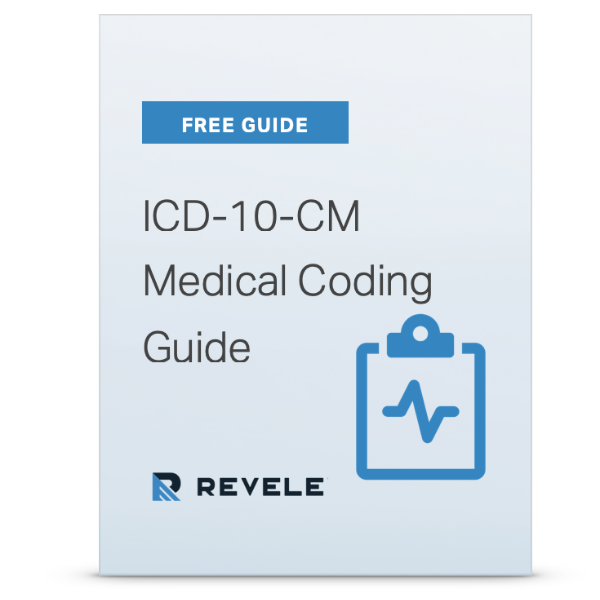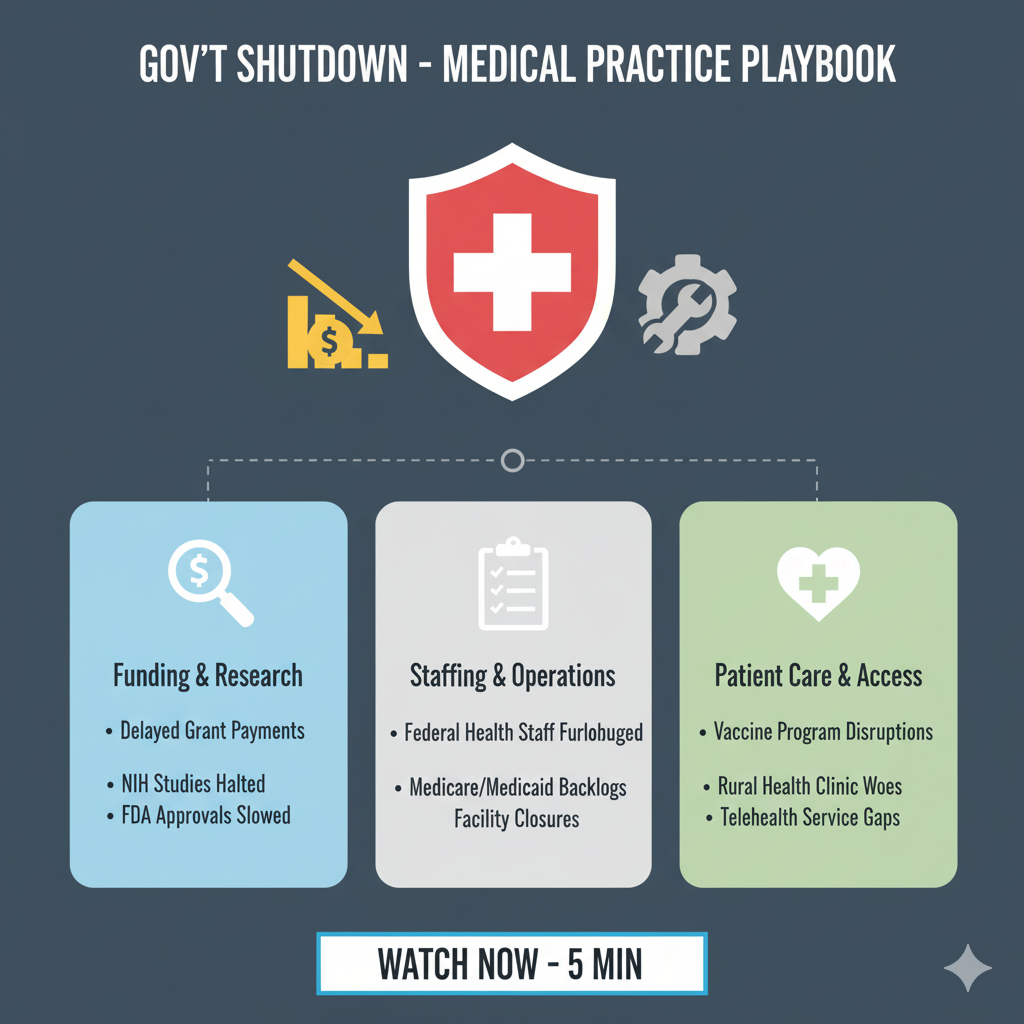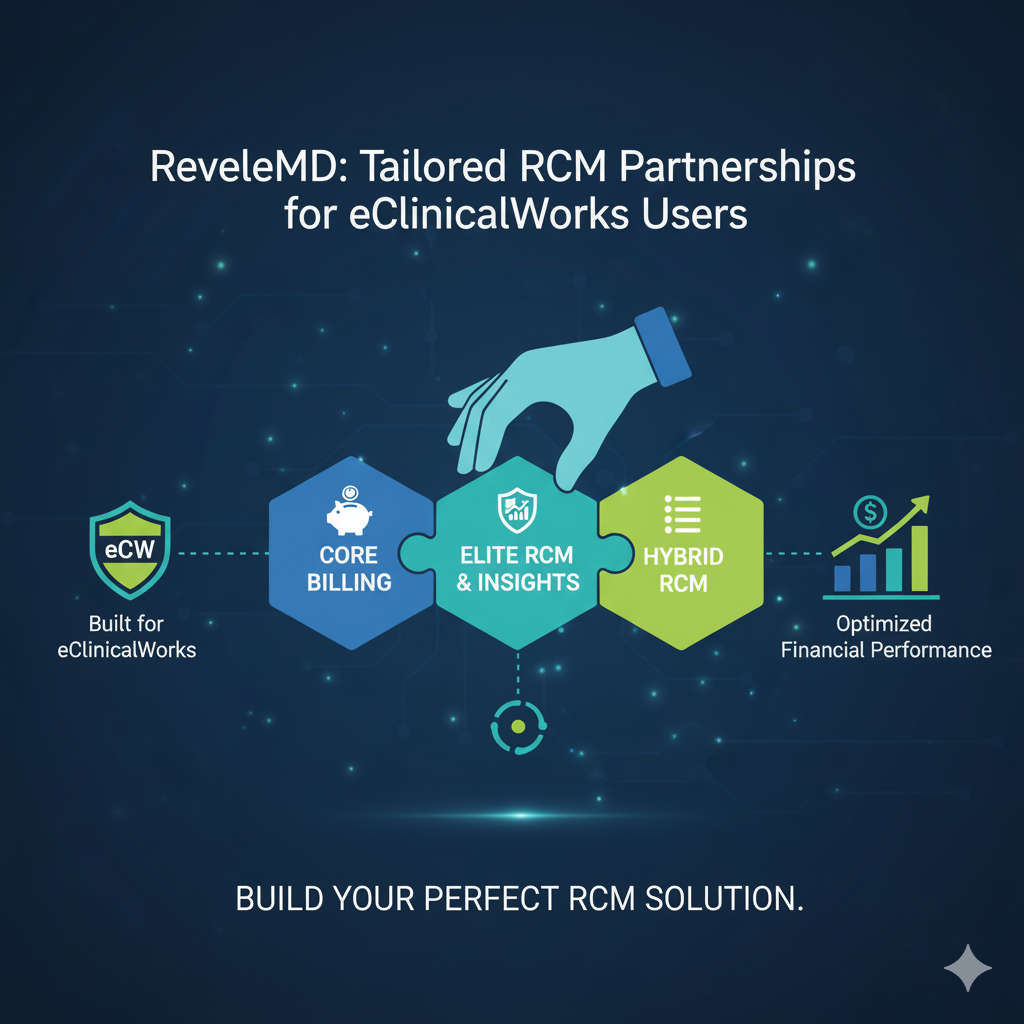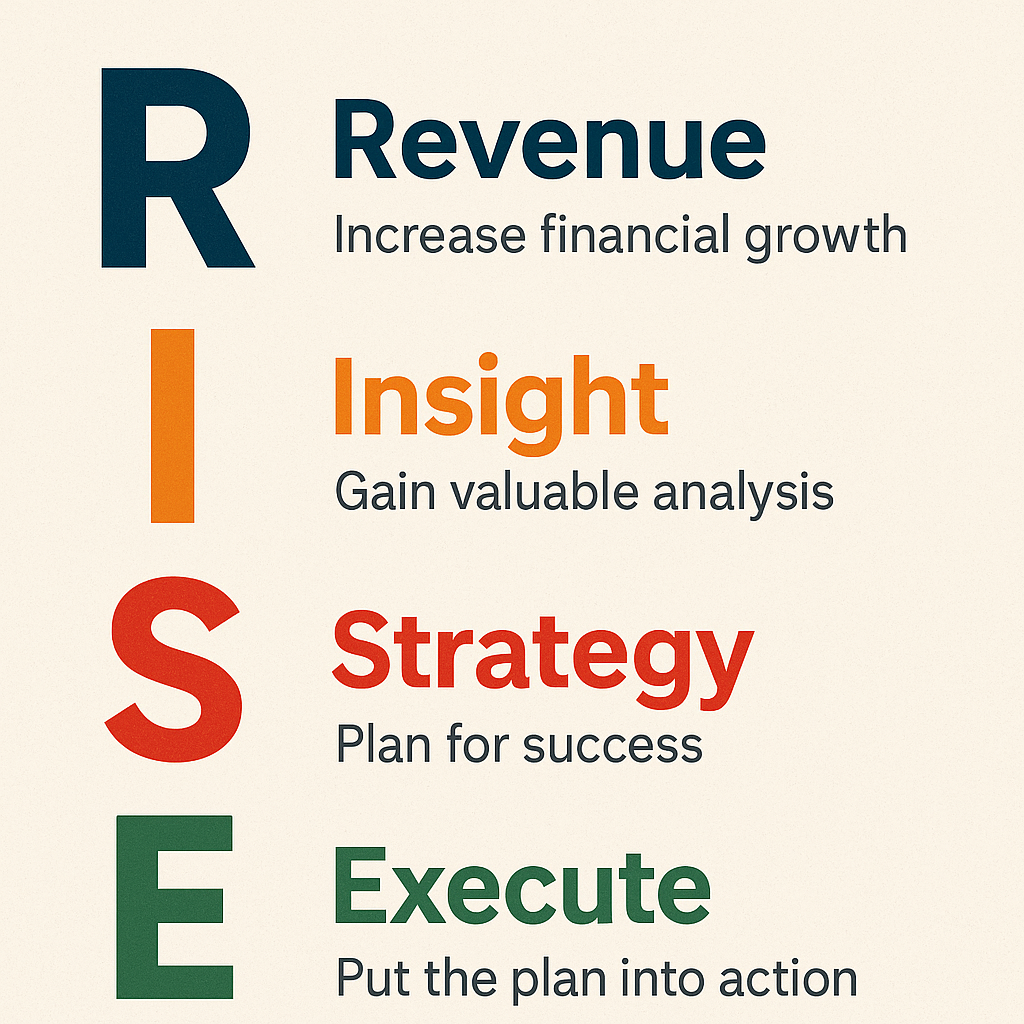In the ever-evolving world of healthcare, staying ahead of the curve is crucial for any practice. The integration of innovative technologies not only enhances patient care but also opens new avenues for revenue generation. This blog post delves into 15 groundbreaking technologies, drugs, and procedures that have the potential to transform patient outcomes and boost profitability for physician practices.

- Genetic Testing and Personalized Medicine
Genetic testing identifies individual susceptibilities to certain diseases, paving the way for personalized treatment plans. This approach can significantly improve patient outcomes and satisfaction. Moreover, offering these services can generate substantial revenue, given the high cost of genetic testing. A study in the Journal of Personalized Medicine found that personalized medicine can lead to a 70% reduction in hospitalization rates, underlining its potential to save healthcare costs in the long run.
In 2020, the global market for genetic testing and personalized medicine was valued at $100 billion. It is projected to grow to $250 billion by 2025. The average genetic test cost is $2,000 in the United States. However, the cost can vary depending on the type of test and the laboratory that performs it.
There is evidence that genetic testing can lead to cost savings in healthcare. For example, a study published in the journal "JAMA Internal Medicine" found that genetic testing for BRCA1 and BRCA2 mutations led to a 50% reduction in the cost of breast cancer treatment.
Some more interesting factors regarding genetic testing and personalized medicine:
- A 2019 American College of Physicians study found that genetic testing can save $1,000 to $2,000 per patient in the first year of treatment.
- A 2020 study by the National Institutes of Health found that genetic testing can lead to a 20% reduction in the number of unnecessary surgeries.
- A 2021 study by the Centers for Disease Control and Prevention found that genetic testing can lead to a 15% improvement in patient outcomes.
Overall, the financial statistics related to the use of genetic testing and personalized medicine are positive. These statistics suggest that genetic testing can be a cost-effective way to improve patient care. As the cost of genetic tests continues to decrease and the evidence of their benefits continues to grow, we can expect to see more physician practices adopt genetic testing and personalized medicine.
- Artificial Intelligence (AI) in Diagnostic Procedures
AI can assist physicians in diagnosing diseases more accurately and quickly. AI algorithms can analyze medical imaging to detect abnormalities that might be missed by the human eye. This can lead to earlier and more accurate diagnoses, improving patient outcomes. It can also increase efficiency and allow physicians to see more patients. According to a report by Accenture, AI applications in healthcare can potentially create $150 billion in annual savings for the US healthcare economy by 2026. These savings would be driven by several factors, including:
- Improved accuracy of diagnoses: AI-powered diagnostic tools can identify diseases earlier and more accurately than traditional methods, leading to earlier treatment and improved outcomes. In this JAMA article, ChatGPT answers online medical questions better and more empathetically than real doctors.
- Reduced costs of care: AI-powered diagnostic tools can help reduce the cost of care by streamlining the diagnostic process and reducing unnecessary tests and procedures.
- Increased efficiency: AI-powered diagnostic tools can help increase healthcare providers' efficiency by freeing up their time to focus on more complex cases.
Here are some additional financial statistics related to the use of AI in diagnostic procedures:
- In 2020, the global market for AI-powered diagnostic tools was valued at $2.6 billion. This market is expected to grow at a compound annual growth rate (CAGR) of 25% from 2021 to 2028.
- The U.S. market for AI-powered diagnostic tools is expected to reach $1.5 billion by 2028.
- The top five use cases for AI-powered diagnostic tools are:
- Cancer detection
- Heart disease detection
- Stroke detection
- Alzheimer's disease detection
- Autism spectrum disorder detection
These financial statistics demonstrate the significant potential of AI in diagnostic procedures. As technology continues to develop, it is likely that AI will play an increasingly important role in the diagnosis and treatment of diseases.
- Virtual Reality (VR) for Pain Management
VR has been used as a non-pharmacological method for managing pain and anxiety, particularly in procedures like wound care and minor surgeries. It works by distracting the patient and reducing their perception of pain. This can improve patient satisfaction and outcomes and generate additional revenue as an add-on service. Some interesting studies about the use of VR for Pain:
- A study in the Journal of Medical Internet Research found that VR can reduce pain by up to 24%.
- A study by the American Society of Anesthesiologists found that VR can reduce opioid use by up to 50% in patients undergoing surgery. This can lead to significant cost savings for hospitals and insurance companies.
- A study by the University of California, San Francisco, found that VR can reduce pain by up to 30% in chronic patients. This can improve quality of life and reduce the need for expensive medications.
- The cost of VR headsets has been declining in recent years, making them more affordable for physician practices.
- There are several VR pain management programs available, some of which are covered by insurance.
As the cost of VR headsets continues to decline, they will become more affordable for physician practices. As more research is conducted on the effectiveness of VR for pain management, more insurance companies are likely to cover the cost of VR therapy. The increasing popularity of VR for gaming and other entertainment purposes is likely to drive demand for VR headsets, which could make them even more affordable for physician practices. Overall, the financial statistics and other trends suggest that VR has the potential to be a major player in the pain management market in the years to come.
- Biologics for Chronic Disease Management
Biologics are drugs made from living organisms, and they have been used to treat conditions like rheumatoid arthritis, psoriasis, and certain forms of cancer. They can be more effective than traditional drugs for some patients, leading to better outcomes. However, they are also more expensive, which can increase revenue for practices that offer them. A report by IQVIA Institute found that spending on biologics in the US reached $125 billion in 2018, up 50% from 2014. Some more interesting factors about the use of Biologics for Chronic Disease Management:
- In 2020, the global market for biologics was valued at $283.5 billion. This market is expected to grow at a compound annual growth rate (CAGR) of 10.4% from 2021 to 2028.
- The United States is the largest market for biologics, accounting for 44% of the global market in 2020.
- The most common chronic diseases treated with biologics include rheumatoid arthritis, psoriasis, Crohn's disease, ulcerative colitis, and multiple sclerosis.
- Biologics can be very effective in treating chronic diseases but can also be expensive. The average cost of a biological drug in the United States is $150,000 per year.
- The high cost of biologics can be a barrier to access for patients. However, several programs are available to help patients afford biologics, such as patient assistance programs and discounts from manufacturers.
The future adoption of biologics for chronic disease management in healthcare is likely to be driven by a few factors, including:
- The continued growth of the global market for biologics
- The increasing prevalence of chronic diseases
- The development of new and more effective biologic drugs
- The reduction in the cost of biologics
- The increasing awareness of the benefits of biologics among patients and physicians
- Telemedicine Services
Telemedicine allows physicians to consult with patients remotely via video conferencing. This technology can increase the number of patients a practice can see in a day, as it eliminates travel time and allows for more flexible scheduling. It can also improve patient outcomes by providing easier access to care, particularly for those in remote areas or with mobility issues. A study published in the Journal of Telemedicine and Telecare found that telemedicine can save patients over 100 minutes of their time and about $50 in costs per visit, suggesting that patients might be willing to pay for this convenience.
Telemedicine has the potential to save money in physician practices by reducing the need for travel, providing access to specialists, and improving patient outcomes. In addition to cost savings, telemedicine can also generate revenue for physician practices. For example, practices can charge patients a fee for telemedicine consultations. They can also use telemedicine to reach new patients who live in rural areas or who have difficulty accessing traditional healthcare services.
The financial benefits of telemedicine are likely to continue to drive its adoption in physician practices. As technology becomes more affordable and the regulatory environment becomes more favorable, telemedicine is poised to become a mainstream healthcare delivery option.
- 3D Printing in Prosthetics and Implants
3D printing technology can be used to create customized prosthetics and implants for patients. These bespoke solutions can offer a better fit and increased comfort compared to traditional options, leading to improved patient outcomes. Additionally, offering these services can generate significant revenue for practices, as these custom solutions often carry a higher price tag. According to a report by SmarTech Analysis, the market for 3D-printed orthopedic implants is expected to reach $1.9 billion by 2026. Some more interesting factors about the use of Biologics for Chronic Disease Management:
- The global market for medical 3D printing is expected to reach $13.8 billion by 2027.
- The United States is the largest market for medical 3D printing, accounting for 35% of the global market.
- The medical 3D printing market is growing at a compound annual growth rate (CAGR) of 21.2%.
- A study by the University of California, San Francisco found that 3D printing can reduce the cost of prosthetic limbs by up to 80%.
- A study by the University of Pennsylvania found that 3D printing can reduce the time it takes to manufacture a prosthetic limb from 6 months to 2 weeks.
- A study by the Mayo Clinic found that 3D printing can improve the accuracy of prosthetic limbs by up to 99%.
- The cost of traditional manufacturing methods, such as injection molding, is rising. 3D printing is a more cost-effective manufacturing method that can be used to produce small batches of products.
- The FDA has approved a growing number of medical 3D-printed products. This is making it easier for physician practices to obtain reimbursement for 3D-printed prosthetics and implants.
Overall, the financial benefits of 3D printing, such as cost savings, revenue, and improved accuracy, are driving the growth of the market for 3D printing of prosthetics and implants in physician practices. As the FDA continues to approve more 3D printed medical devices and the cost of 3D printers and 3D printing materials decreases, we can expect to see even more physician practices adopt this technology.
- Digital Therapeutics
Digital therapeutics are software programs that can help manage, prevent, or treat diseases. They can be used as standalone treatments or in conjunction with traditional therapies. Offering these solutions can generate additional revenue for practices and improve patient outcomes by providing continuous care outside of the office. A Journal of Medical Internet Research study found that digital therapeutics can improve treatment adherence rates by up to 40%. Some more interesting factors about the use of Digital Therapeutics:
- According to a 2022 report by Grand View Research, the global digital therapeutics market is expected to reach $29.2 billion by 2027. This growth is driven by the increasing adoption of digital therapeutics for treating chronic diseases like diabetes, obesity, and mental health disorders.
- A 2021 study by the American Telemedicine Association found that the average cost of a telehealth visit is $40, compared to $150 for an in-person visit. These cost savings can be passed on to patients, making digital therapeutics more affordable.
- A 2020 Centers for Disease Control and Prevention study found that digital therapeutics can improve patient outcomes. For example, a digital therapeutic for diabetes was found to reduce HbA1c levels by 1.5% over a 12-month period.
Overall, the financial statistics related to the use of digital therapeutics in physician practices are very positive. These technologies offer several potential benefits, including cost savings, improved patient outcomes, and increased patient satisfaction. As the evidence for the effectiveness of digital therapeutics grows, we can expect to see even more widespread adoption of these technologies in physician practices.
- Robot-Assisted Surgery
Robot-assisted surgery (RAS) can increase precision and reduce the risk of complications during surgical procedures. This can lead to better patient outcomes and shorter hospital stays. Additionally, these advanced procedures can command higher reimbursement rates, increasing revenue for practices. According to a report by Markets and Markets, the global market for surgical robots is expected to reach $11.8 billion by 2025. Some more interesting factors about the use of RAS:
- The global market for RAS is expected to reach $20.98 billion by 2030, with a compound annual growth rate (CAGR) of 16.84% from 2021 to 2030. (Source: Strategic Market Research)
- In the United States, the market for RAS is expected to reach $10.7 billion by 2026. (Source: Grand View Research)
- The average cost of a RAS system is $2 million. (Source: Intuitive Surgical)
- The average cost of a RAS procedure is $10,000 more than traditional open surgery. (Source: The Henry Ford Health System)
- However, RAS procedures can lead to shorter hospital stays and lower complication rates, which can offset the higher cost of the procedure. (Source: The Henry Ford Health System)
- A Society of American Gastrointestinal and Endoscopic Surgeons study found that RAS procedures for benign and malignant pancreas, liver, and biliary tract diseases resulted in shorter hospital stays, lower complication rates, and similar or better outcomes than traditional open surgery. (Source: Society of American Gastrointestinal and Endoscopic Surgeons)
- Another American College of Surgeons study found that RAS procedures for colorectal cancer resulted in shorter hospital stays and lower complication rates than traditional open surgery. (Source: American College of Surgeons)
The use of RAS in physician practices is expected to continue to grow in the coming years. The benefits of RAS, such as shorter hospital stays, lower complication rates, and improved patient outcomes, are becoming increasingly recognized by patients and healthcare providers. As the cost of RAS systems and procedures continues to decline, and as more surgeons are trained in RAS, we can expect to see even more widespread adoption of this technology in the future.
- Remote Patient Monitoring
Remote patient monitoring involves the use of digital technologies to collect health data from patients in one location and electronically transmit it to healthcare providers in a different location. This can improve patient outcomes by enabling continuous monitoring and early intervention. It can also generate additional revenue for practices through reimbursement for remote care services. A study published in the Journal of Medical Systems found that remote patient monitoring can reduce hospital readmission rates by up to 31%.
A growing body of evidence suggests that RPM can lead to significant financial benefits for physician practices. For example, a study published in the Journal of Managed Care Medicine found that RPM can reduce the cost of care for patients with diabetes by an average of $2,000 per year. The revenue per patient enrolled in RCM can equal an estimated $200 per month. At that rate, if 50 patients are enrolled in an RPM program, a practice can expect to generate $124,000 a year in revenue.
In addition to the financial benefits mentioned above, RPM can also lead to a few other benefits for physician practices, including:
- Improved patient satisfaction: RPM patients report being more satisfied with their care. This is because RPM allows them to have more control over their health and to feel like they are being actively monitored by their healthcare providers.
- Increased patient engagement: RPM can help to increase patient engagement in their care. This is because it provides patients with a way to track their own health data and to communicate with their healthcare providers on a regular basis.
- Reduced administrative burden: RPM can help to reduce the administrative burden on physician practices. This is because it can automate many of the tasks that are currently done manually, such as collecting patient data and sending out reminders.
Overall, RPM is a valuable tool that can provide several benefits for physician practices. As the technology continues to develop and the cost of RPM decreases, it is likely that RPM will become increasingly adopted by physician practices.
- Immunotherapy for Cancer Treatment
Immunotherapy involves using the body's own immune system to fight cancer. These treatments can be more effective than traditional chemotherapy for some patients, leading to better outcomes. However, they are also more expensive, which can increase revenue for practices that offer them. According to a report by Global Market Insights, the global market for cancer immunotherapy is expected to reach $160 billion by 2025. The use of immunotherapy in physician practices is growing rapidly. In 2016, there were only about 10,000 immunotherapy-treated patients in the United States. By 2022, that number is expected to reach 1 million. Immunotherapy can be a cost-effective treatment for cancer patients. In a study published in the Journal of Clinical Oncology, researchers found that immunotherapy was associated with a cost savings of $10,000 per patient compared to traditional cancer treatments.
Here are some additional financial statistics related to the use of immunotherapy for cancer treatment in physician practices:
- The global market for immunotherapy is expected to reach $117.14 billion by 2022.
- The United States is the largest market for immunotherapy, accounting for about half of the global market.
- The average cost of an immunotherapy drug is $100,000 per year.
- The use of immunotherapy in physician practices is expected to continue to grow in the coming years.
The financial statistics presented above suggest that immunotherapy is a promising treatment for cancer patients. Immunotherapy can be a cost-effective treatment, and it is expected to become more affordable in the coming years. As the effectiveness of immunotherapy treatments improves, more and more cancer patients will be able to benefit from this innovative treatment.
- Nanotechnology
Nanotechnology involves using tiny particles or devices to deliver drugs, diagnose diseases, repair tissues, or monitor health conditions. It can offer more precise, less invasive, less costly, and less complicated treatments than traditional methods. It can also improve patient outcomes, lower healthcare costs, and widen access to healthcare services in under-resourced parts of the world. The global nanotechnology market is expected to reach $1 trillion by 2025. The U.S. market for nanotechnology in healthcare is expected to reach $250 billion by 2025. Here are some specific examples of how nanotechnology is being used in physician practices today:
- Nanoparticles are being used to deliver cancer drugs more effectively. For example, the drug Doxil is a nanoparticle-based drug that is used to treat ovarian cancer. Doxil has been shown to be more effective than traditional chemotherapy drugs and to have fewer side effects.
- Nanoparticles are being used to diagnose diseases earlier. For example, the company Nanosphere has developed a nanoparticle-based test for prostate cancer. The test is called Prostate Health Index (PHI) and it can detect prostate cancer with a high degree of accuracy.
- Nanoparticles are being used to repair damaged tissue. For example, the company Organovo has developed a 3D bioprinter that can print human tissue. The bioprinter uses nanoparticles to create a scaffold for the tissue to grow on. This technology has the potential to be used to repair damaged tissue in a variety of medical applications.
These are just a few examples of how nanotechnology is being used in physician practices. As the nanotechnology market continues to grow, nanotechnology in physician practices will likely become more widespread.
- Wearable Devices
Wearable devices involve using sensors or gadgets that can be worn on the body to monitor health conditions, track activity, or deliver therapy. These devices can help patients manage their chronic diseases, improve their wellness, and engage with their physicians. They can also provide valuable data and insights for physicians to optimize care and outcomes. The global wearable medical devices market is projected to reach USD 46.6 billion by 2025 from USD 20.4 billion in 2020, at a CAGR of 18.0% during the forecast period. This growth is driven by the increasing awareness of fitness and health among people and the advantages of these devices in monitoring health and fitness parameters.
Some more interesting factors about the use of wearable devices:
- A study by the American Medical Association found that the use of wearable devices can save healthcare organizations an average of $3,600 per patient per year.
- A study by the Centers for Disease Control and Prevention found that the use of wearable devices can help patients reduce their risk of chronic diseases by up to 25%.
All of these factors are likely to contribute to the future adoption of wearable devices by physician practices. As the use of wearable devices becomes more widespread, we can expect to see even greater financial benefits for healthcare organizations and improved health outcomes for patients.
- Regenerative Medicine
Regenerative medicine involves using cells, tissues, or organs to repair or replace damaged or diseased parts of the body. This innovative approach can offer a novel solution for some conditions that have limited treatment options or poor prognoses. It can also enhance the function and quality of life of patients. The use of regenerative medicine in physician practices is still in its early stages, but the potential financial benefits are significant. An Alliance for Regenerative Medicine study found that the global regenerative medicine market is expected to reach $250 billion by 2025. Of this, $100 billion is expected to come from the use of regenerative medicine in physician practices.
The use of regenerative medicine can lead to significant cost savings for patients and healthcare providers. For example, a study by the University of Pennsylvania found that the use of stem cell therapy to treat knee osteoarthritis resulted in cost savings of $10,000 per patient. In addition to cost savings, the use of regenerative medicine can also lead to increased revenue for physician practices. A study by the American Medical Association found that physician practices that offer regenerative medicine services can generate an additional $50,000 in revenue per year.
- Gene Therapies
Gene therapies involve using genetic material to treat or prevent diseases caused by faulty or missing genes. These therapies can offer a potential cure for rare and life-threatening conditions with no other effective treatments. Gene therapies are a rapidly growing field of medicine, with the potential to treat a wide range of diseases. However, gene therapies are also very expensive, which can make them difficult for physician practices to adopt. According to a study by the National Institutes of Health, the average cost of a gene therapy is $1 million. This cost is much higher than the cost of traditional therapies, which can make it difficult for physician practices to justify the expense. In addition to the high cost, gene therapies can also be difficult to administer. They often require specialized equipment and training, which can further increase the cost of treatment.
Despite the challenges, there are several financial benefits to using gene therapies in physician practices. Gene therapies can provide long-term relief from symptoms, which can reduce the need for repeat treatments. They can also improve patient outcomes and quality of life. In a study of patients with hemophilia, gene therapy was shown to reduce the number of bleeding episodes by 90%. This resulted in significant cost savings for the healthcare system. Gene therapies can also be used to prevent diseases. For example, gene therapy is being developed to prevent HIV infection. If successful, this could save billions of dollars in healthcare costs.
The future of gene therapies in physician practices is promising. As the cost of gene therapies decreases and the technology improves, more and more physician practices will adopt these treatments. Gene therapies have the potential to revolutionize the way we treat disease, and they could save billions of dollars in healthcare costs.
- Immunotherapies
Immunotherapies involve using substances or cells that stimulate or suppress the immune system to fight cancer or other diseases. These therapies can offer more targeted, personalized, and durable treatments than conventional chemotherapy or radiation. Immunotherapies are a rapidly growing area of cancer treatment, and their use in physician practices is increasing. Immunotherapies stimulate the body’s immune system to fight cancer cells. They can be used to treat a variety of cancers, including melanoma, lung cancer, and kidney cancer.
There are several financial benefits to using immunotherapies in physician practices. Immunotherapies can be more cost-effective than traditional cancer treatments, such as chemotherapy and radiation therapy. This is because immunotherapies often require fewer treatment cycles and can be used to treat a wider range of cancers.
In addition, immunotherapies can lead to improved patient outcomes. Immunotherapies have been shown to extend patients' lives and improve their quality of life. This can lead to increased patient satisfaction and loyalty, which can benefit physician practices.
Some more interesting factors about the use of immunotherapies:
- The global market for immunotherapies is expected to reach $150 billion by 2025.
- Immunotherapies are now the standard of care for a number of cancers, including melanoma, lung cancer, and kidney cancer.
- Immunotherapies have been shown to extend patients' lives and improve their quality of life.
- Immunotherapies can be more cost-effective than traditional cancer treatments, such as chemotherapy and radiation therapy.
The financial benefits of using immunotherapies in physician practices are significant. Immunotherapies can be more cost-effective than traditional cancer treatments, and they can lead to improved patient outcomes. As a result, we can expect to see continued growth in the use of immunotherapies in physician practices in the future.
Conclusion
Integrating these innovative technologies and procedures can significantly improve patient outcomes while increasing revenue for physician practices. The key is to stay abreast of the latest advancements and consider how they can be integrated into your practice to benefit your patients and your bottom line.
In this journey of transformation, you are not alone. Revele's Customer Success Team (CST) is available to all Revele RCM clients, providing valuable support and guidance for those looking to improve their revenue cycle management strategies. One of the key members of this team is the Client Performance Manager (CPM). The CPM works closely with clients to understand their unique needs and goals, providing customized solutions that help them achieve success.
Whether identifying new lines of profitable service or implementing advanced healthcare technologies, the CPM ensures that your practice is always at the forefront of innovation. With Revele's CST by your side, you can confidently navigate the future of healthcare, delivering superior care and driving growth in an increasingly competitive landscape.
The future of healthcare is here, and it's powered by technology. Embrace these advancements with the support of Revele's CST and transform your practice into a beacon of modern healthcare. Remember, you're not alone in this journey towards better patient care and increased profitability. Revele is here to guide, support, and ensure your success every step of the way.
Interested in a free financial analysis by Revele's RCM and Practice Experts? Click below:








